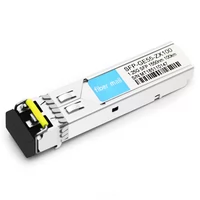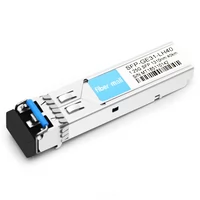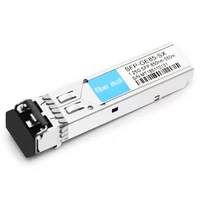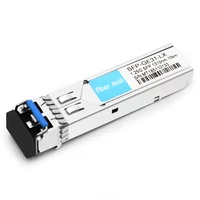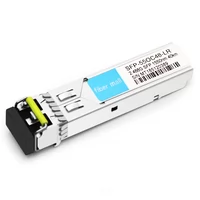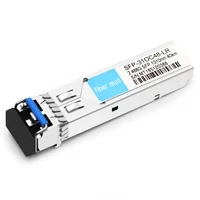When it comes to network connection speed, choosing the right type of network port is very important. In modern networks, Gigabit network ports, 2.5G ports, and 5G ports are common options. This article will detail these network port types and how to choose the one that suits your needs.
Table of Contents
ToggleGigabit Ethernet
Gigabit port, also known as Gigabit Ethernet, is one of the most common and widely used types of network ports. It provides a transmission speed of 1 gigabit per second (1 Gbps), which means it can transmit 100 million bits per second. Gigabit Ethernet is the standard connection method for many home and office networks.
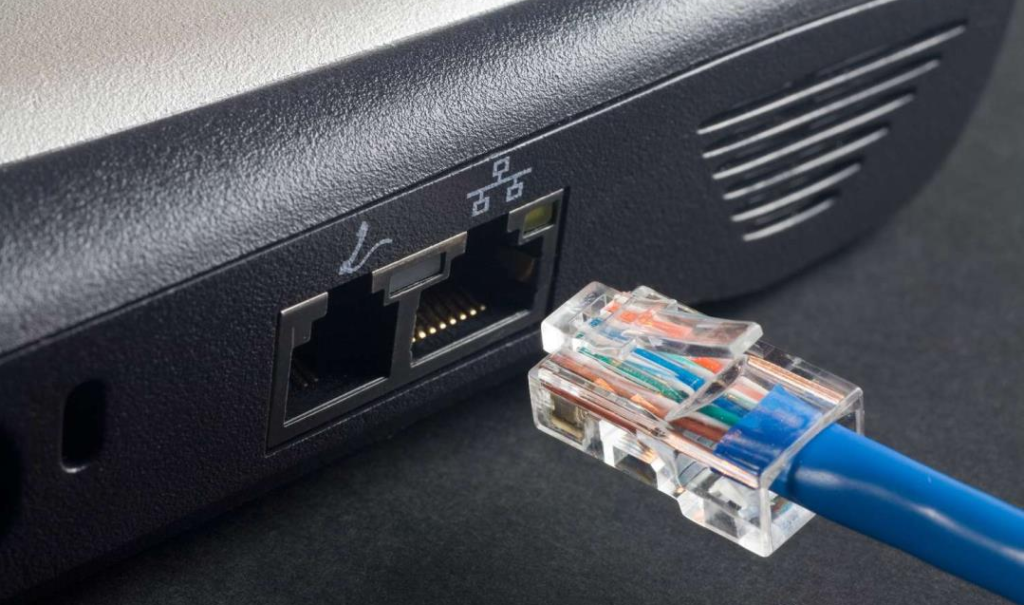
Gigabit Ethernet
The main advantages of Gigabit Ethernet are fast speed, high stability and relatively low cost. It can meet most home and small office networking needs and can handle HD video streaming, online gaming, and common networking tasks. In addition, Gigabit network port equipment and network cables are widely available with a relatively low cost.
However, the main limitation of Gigabit Ethernet is the upper limit on their transmission speed. For scenarios that require higher speeds, the Gigabit Ethernet may not be able to meet the needs. For example, if you need to transfer large amounts of data simultaneously or handle high-bandwidth applications, the Gigabit Ethernet may limit network performance.
2.5G network port
The 2.5G network port is a new type of network port between the Gigabit Ethernet and the 5G network port. It offers a transmission speed of 2.5 gigabits per second (2.5 Gbps), which is 2.5 times faster than a Gigabit port but half as slow as a 5G port. The emergence of 2.5G network ports is to fill the speed gap between Gigabit network ports and 5G network ports and provide better performance options.

2.5G port
The advantage of the 2.5G network port is that it provides higher speeds while keeping costs relatively low. It can adapt to some application scenarios that require higher bandwidth, such as video editing, large-scale data transmission, and simultaneous use of the network by multiple devices. The 2.5G port is also compatible with Gigabit Ethernet equipment, so the network can be upgraded without replacing all equipment.
However, the main limitation of 2.5G ports is the relatively low availability of equipment and cables. In comparison, Gigabit network port equipment and cables are more common and cheaper. In addition, although the speed of the 2.5G network port is faster than the Gigabit network port, it is still not enough for some high-performance scenarios.
5G network port
5G port is a type of high-speed port that provides a transmission speed of 5 gigabits per second (5 Gbps), which is one of the highest available speeds currently. It is suitable for scenarios that need to handle large-scale data transmission, real-time video streaming, virtual reality and other high-bandwidth applications.

5G network port
The main advantage of the 5G network port is its excellent transmission speed and performance. It can meet the needs of professional users and enterprises with strict requirements for high-speed network connections. For scenarios where multiple high-bandwidth tasks need to be processed simultaneously, the 5G network port is an ideal choice.
However, the main limitations of 5G ports include the high cost of its equipment and cables and its limited availability in the market. In addition, most regular network needs in homes and small offices may not require such high speeds, so choosing a 5G network port may exceed actual needs.
The differences between the three ports
Gigabit Ethernet vs 2.5G port vs 5G port
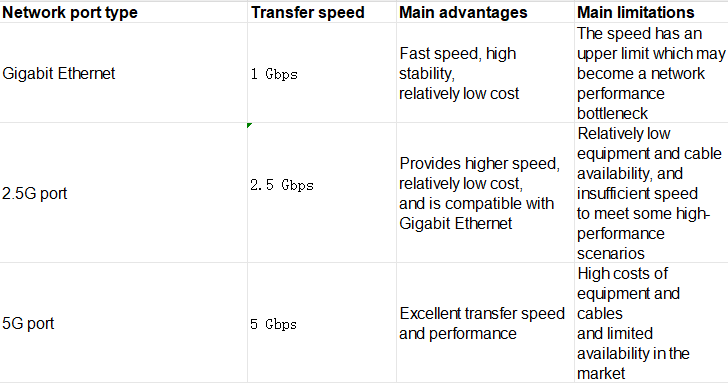
This table clearly lists the main differences between Gigabit Ethernet, 2.5G network ports and 5G network ports. Gigabit network ports have advantages in speed, cost, and stability, but there is an upper limit to the speed. The 2.5G network port provides higher speeds and is compatible with Gigabit network port devices but with less equipment and cable availability. 5G network ports offer excellent speed and performance, but equipment and cable costs are high and availability in the market is limited.
How to choose a network port
When choosing among Gigabit Ethernet, 2.5G network ports and 5G network ports, there are several key factors to consider:
Needs: First determine your network needs. If you’re just doing web browsing, email, and common network tasks, a Gigabit Ethernet port is enough. If you need to handle large-scale data transmission or specific applications that require higher speeds, you can consider 2.5G network ports or 5G network ports.
Availability of equipment and cables: Check the availability of devices and cables in the market. Gigabit network port equipment and cables are relatively more common and cheaper, while 2.5G network port equipment and cables are relatively rare. Make sure you have easy access to the equipment and cables you need.
Cost: Consider your budget. Gigabit network ports are usually the most economical choice, while the equipment and cables for 2.5G network ports and 5G network ports are more expensive. Weigh your needs and budget and choose the option that works best.
Future scalability: Consider whether your network needs to be upgraded in the future. If you plan to add more devices or require higher speeds in the future, you can choose a higher-performance network port type, such as a 2.5G port or a 5G port, to facilitate network expansion and upgrades.
How to choose a network port
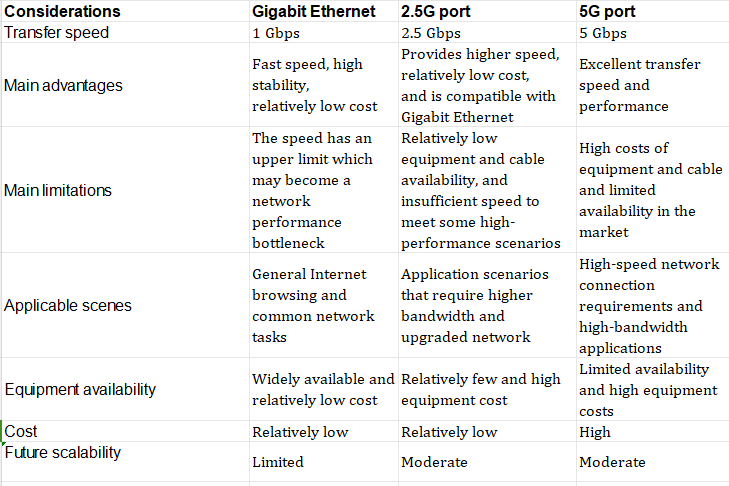
Summary
To sum up, choosing the type of network port that suits your needs is key. Gigabit Ethernet ports are the most common and affordable option for most networking needs at homes and small offices. If you need higher speed and performance, you can consider 2.5G port or 5G port but pay attention to the availability and costs of equipment and cables.
Recommend Reading:
Understanding Router Ports: A Complete Guide
Exploring the Best 2.5GB PCIe Network Card Options for Enhanced Connectivity
Gigabit Ethernet: Understanding the True Gigabit Network Revolution
Understanding Multi-Gig Ethernet Ports: Is 2.5G the Future of Networking?
Related Products:
-
 SFP-GE55-ZX100 1000Base SFP ZX100 1550nm 100km LC SMF DDM Transceiver Module
$35.00
SFP-GE55-ZX100 1000Base SFP ZX100 1550nm 100km LC SMF DDM Transceiver Module
$35.00
-
 SFP-GE31-LH40 1000Base LH40 SFP 1310nm 40km LC SMF DDM Transceiver Module
$10.00
SFP-GE31-LH40 1000Base LH40 SFP 1310nm 40km LC SMF DDM Transceiver Module
$10.00
-
 SFP-GE85-SX 1000Base SFP SX 850nm 550m LC MMF DDM Transceiver Module
$4.50
SFP-GE85-SX 1000Base SFP SX 850nm 550m LC MMF DDM Transceiver Module
$4.50
-
 SFP-GE31-LX 1000Base LX SFP 1310nm 10km LC SMF DDM Transceiver Module
$4.50
SFP-GE31-LX 1000Base LX SFP 1310nm 10km LC SMF DDM Transceiver Module
$4.50
-
 SFP-55OC48-LR 2.488G OC48/STM-16 SFP LR 1550nm 40km LC SMF DDM Transceiver Module
$55.00
SFP-55OC48-LR 2.488G OC48/STM-16 SFP LR 1550nm 40km LC SMF DDM Transceiver Module
$55.00
-
 SFP-31OC48-LR 2.488G OC48/STM-16 SFP LR 1310nm 40km LC SMF DDM Transceiver Module
$50.00
SFP-31OC48-LR 2.488G OC48/STM-16 SFP LR 1310nm 40km LC SMF DDM Transceiver Module
$50.00

